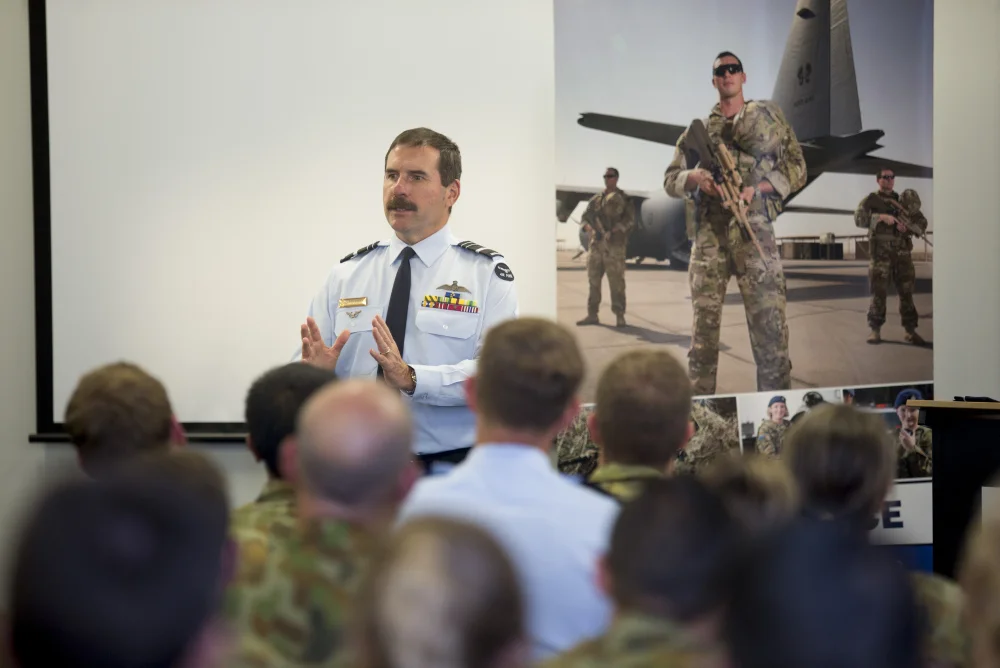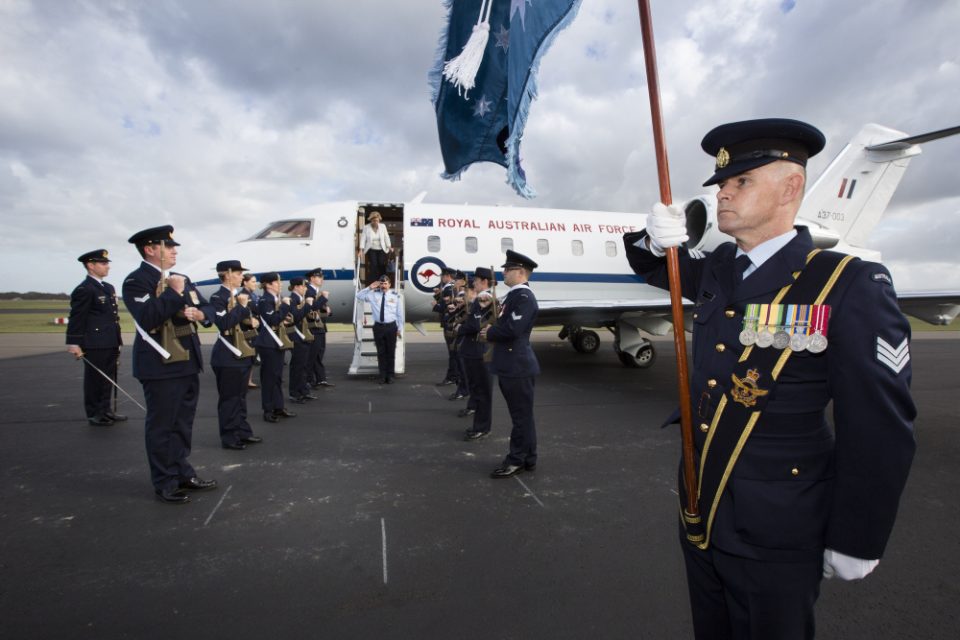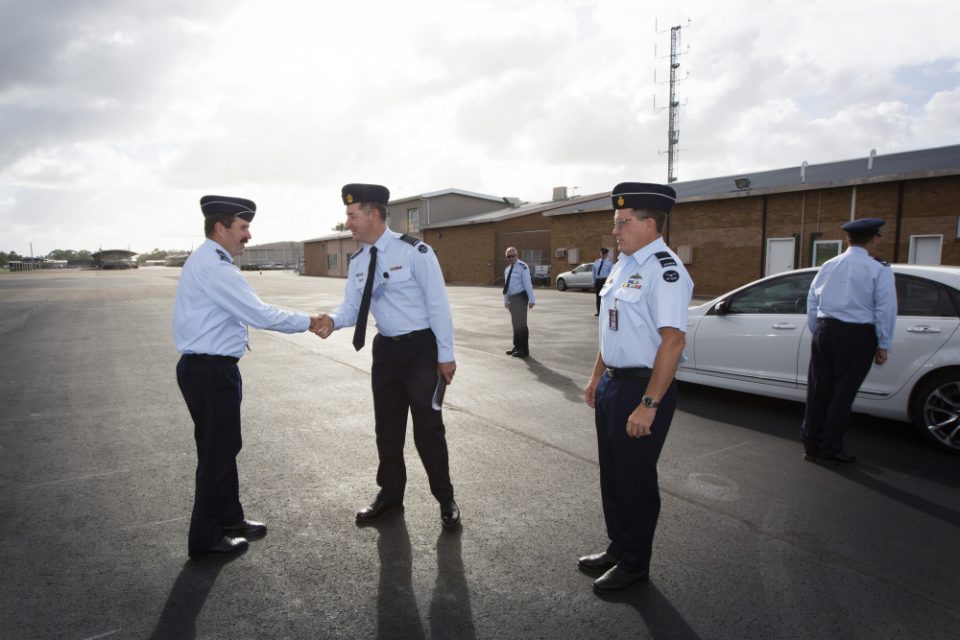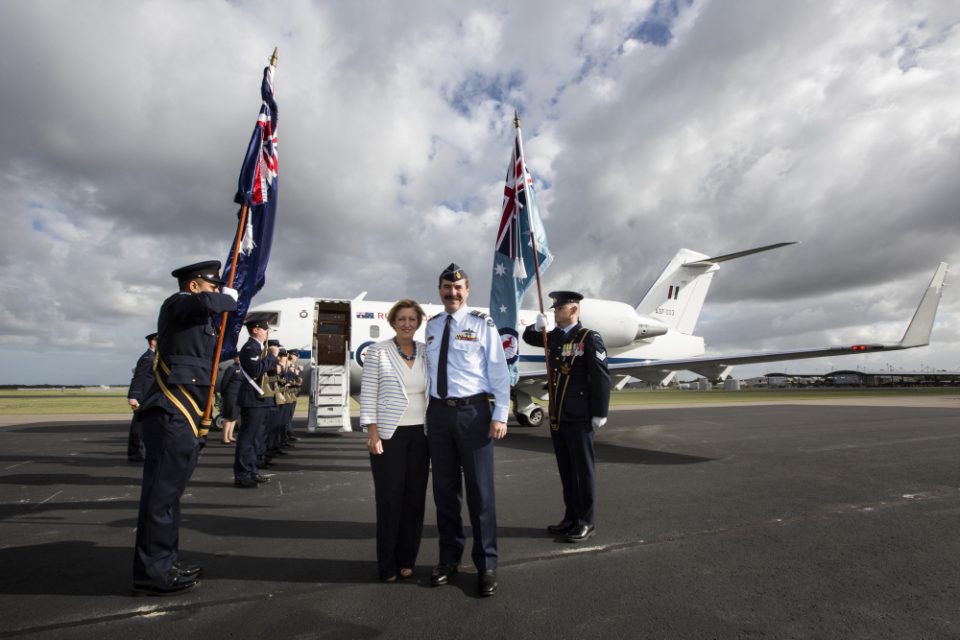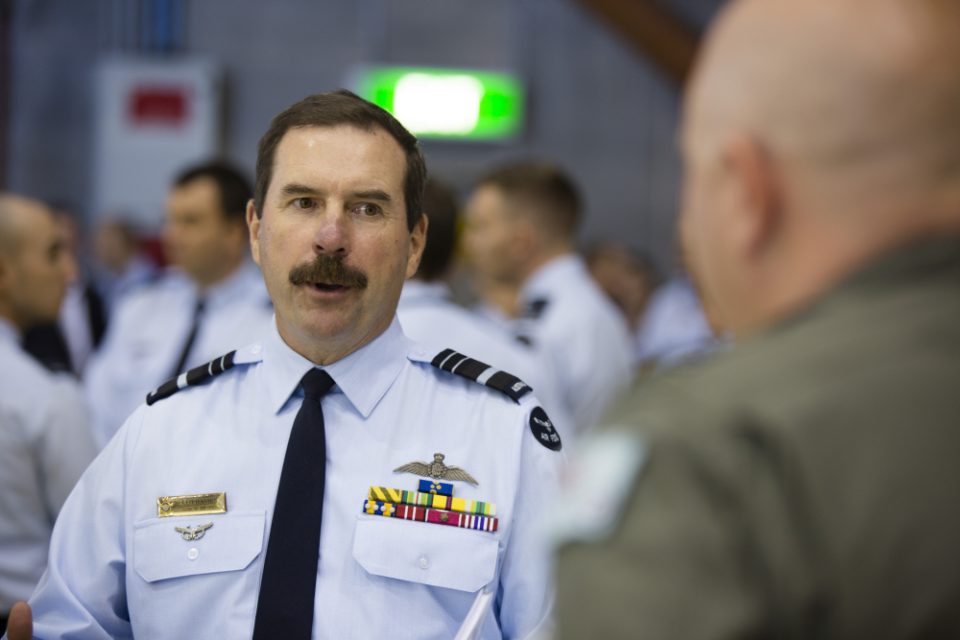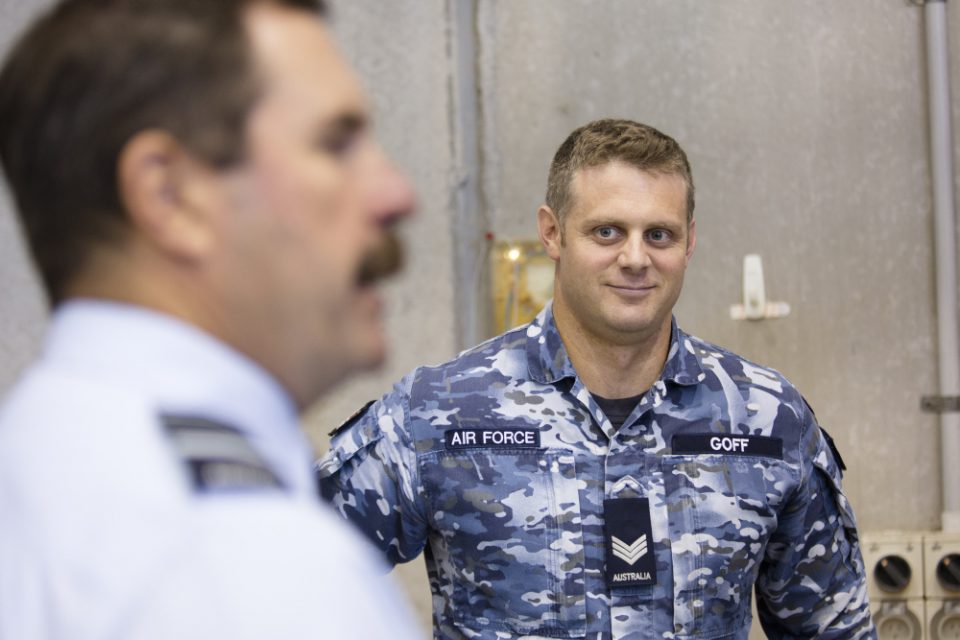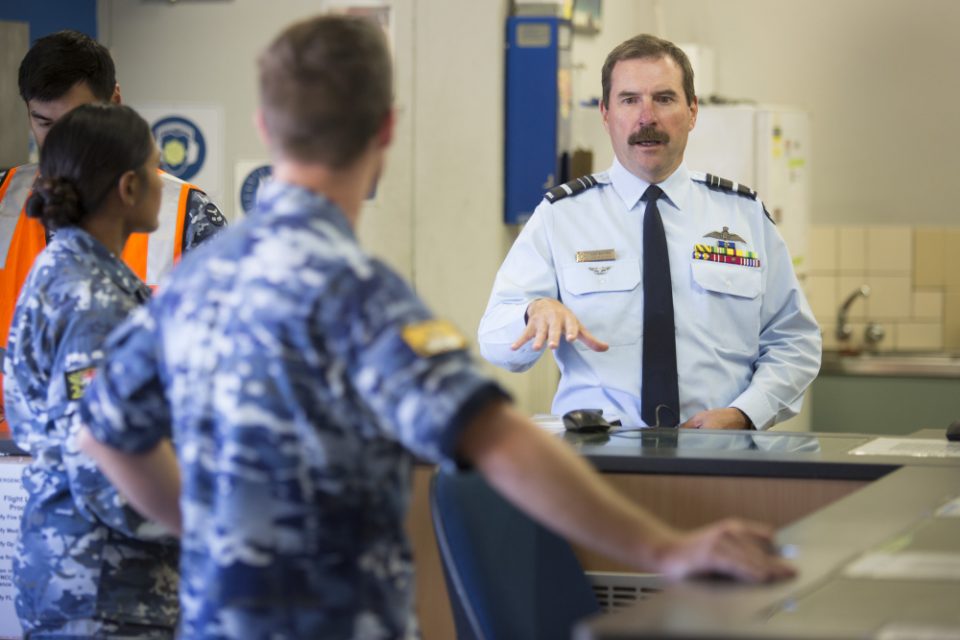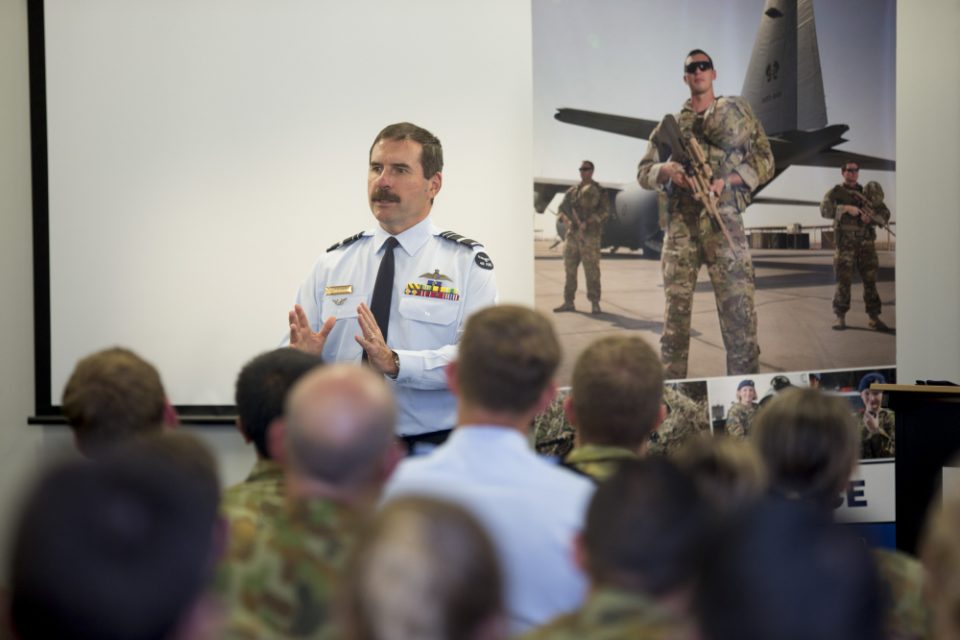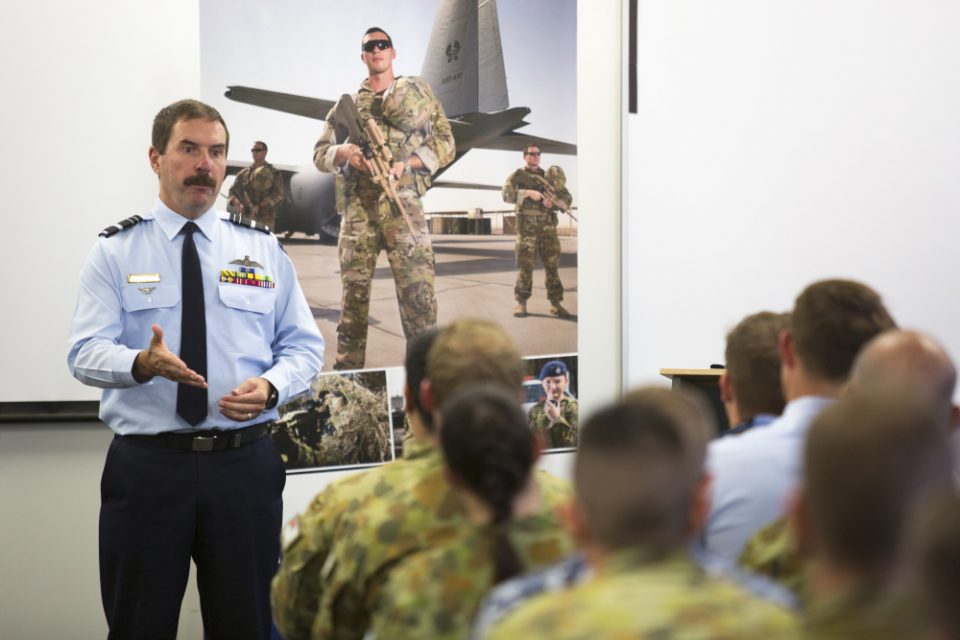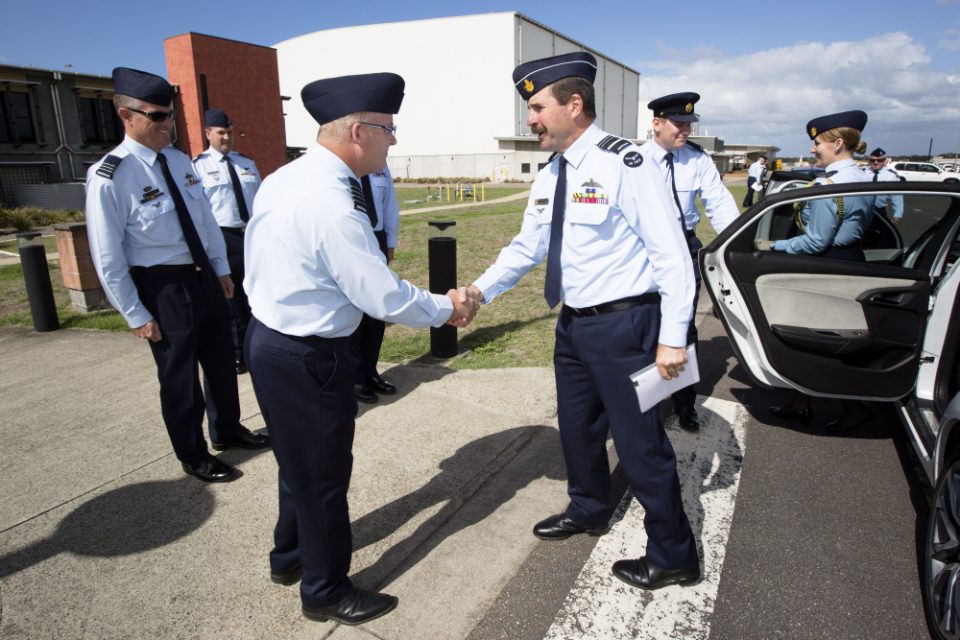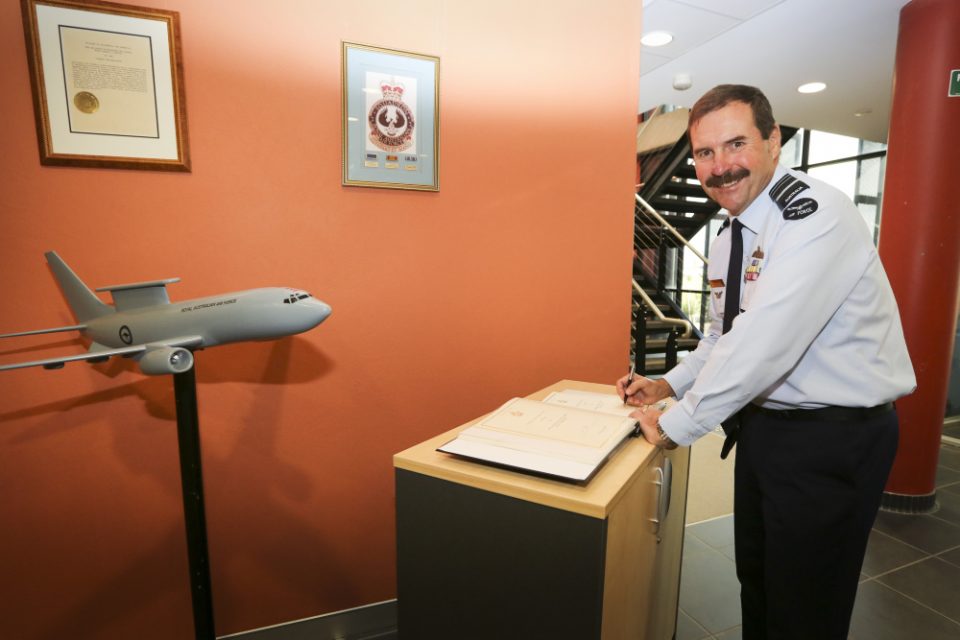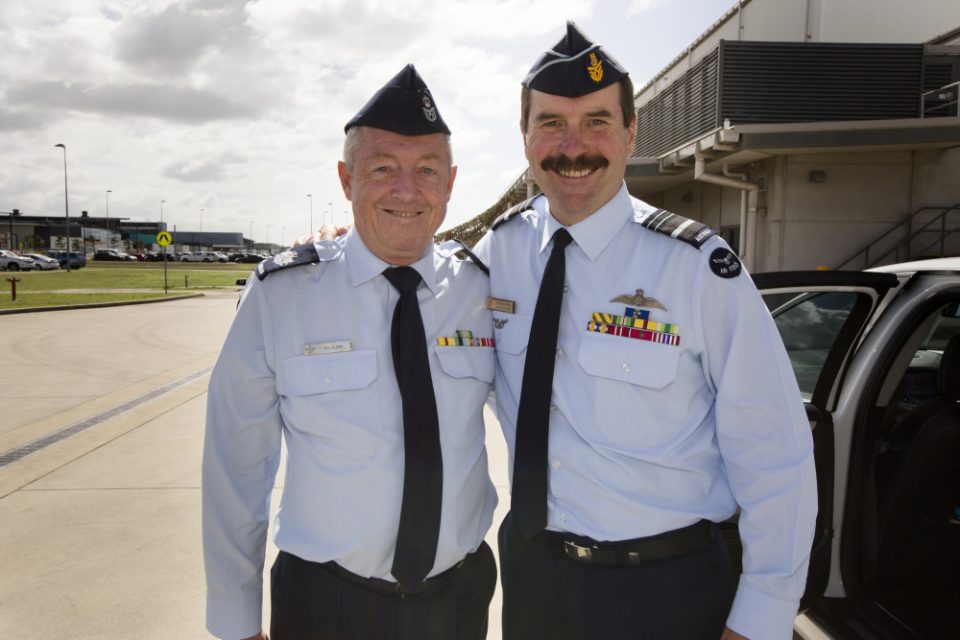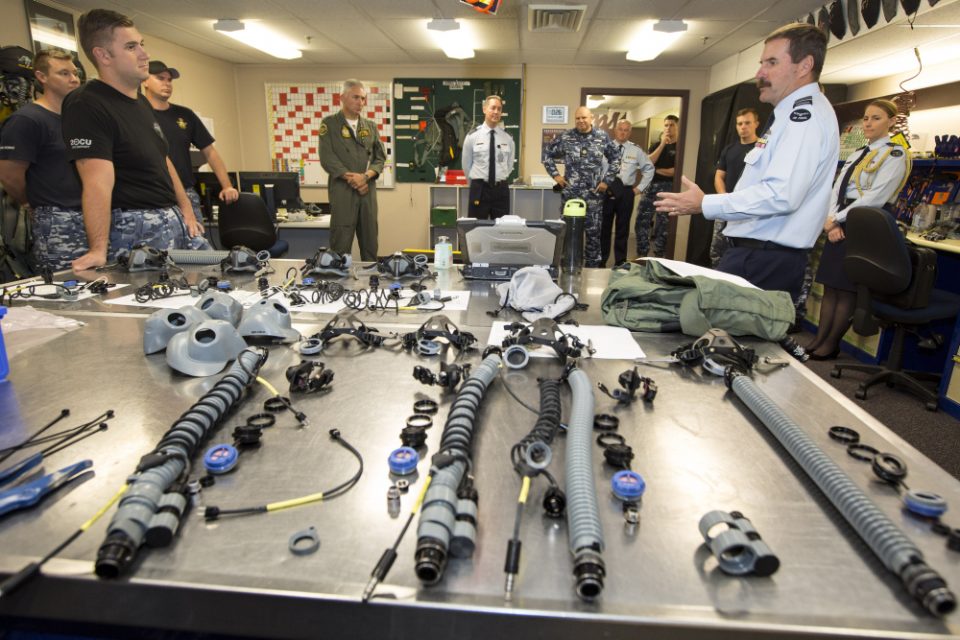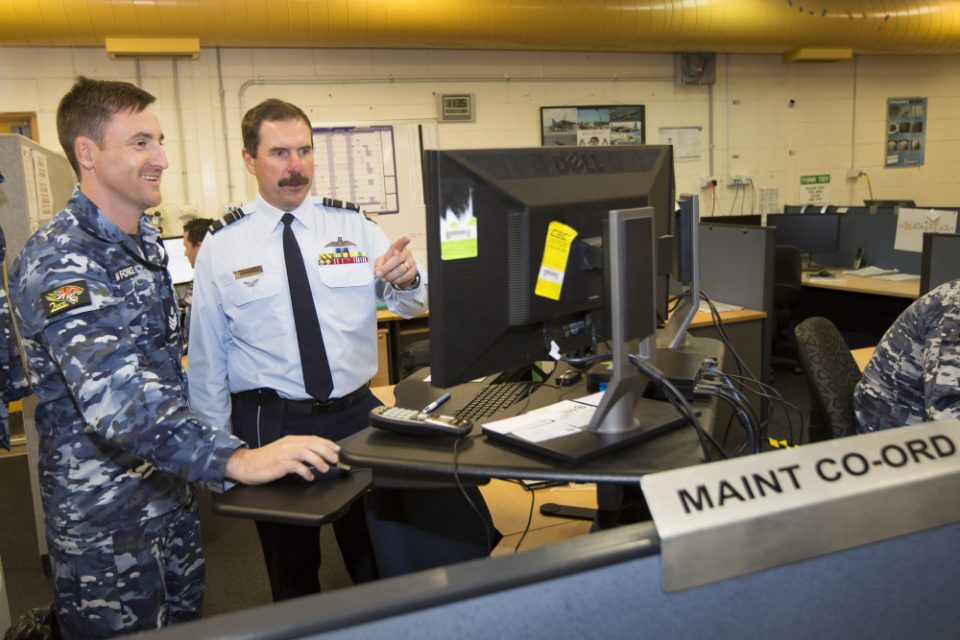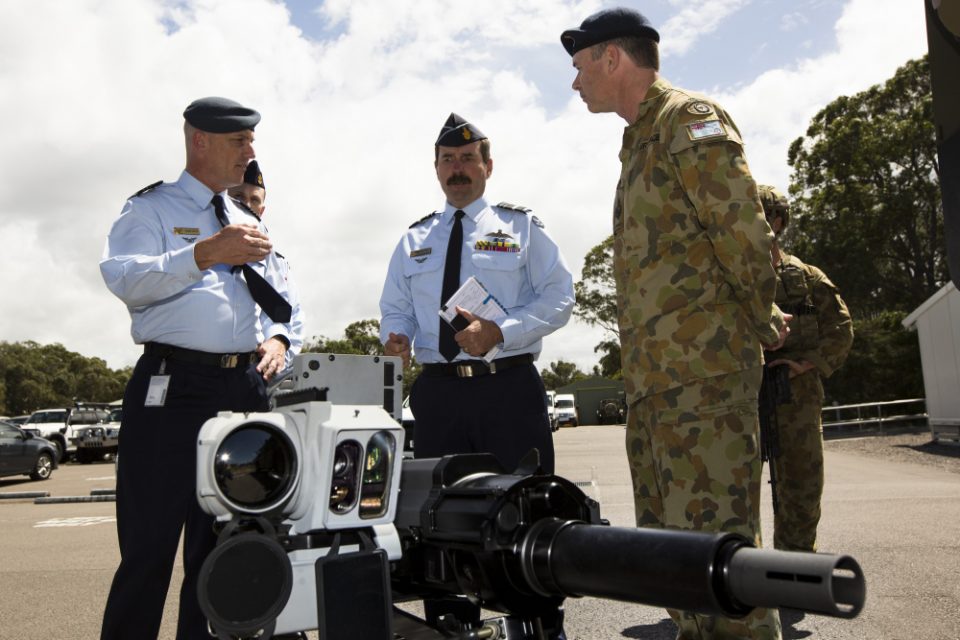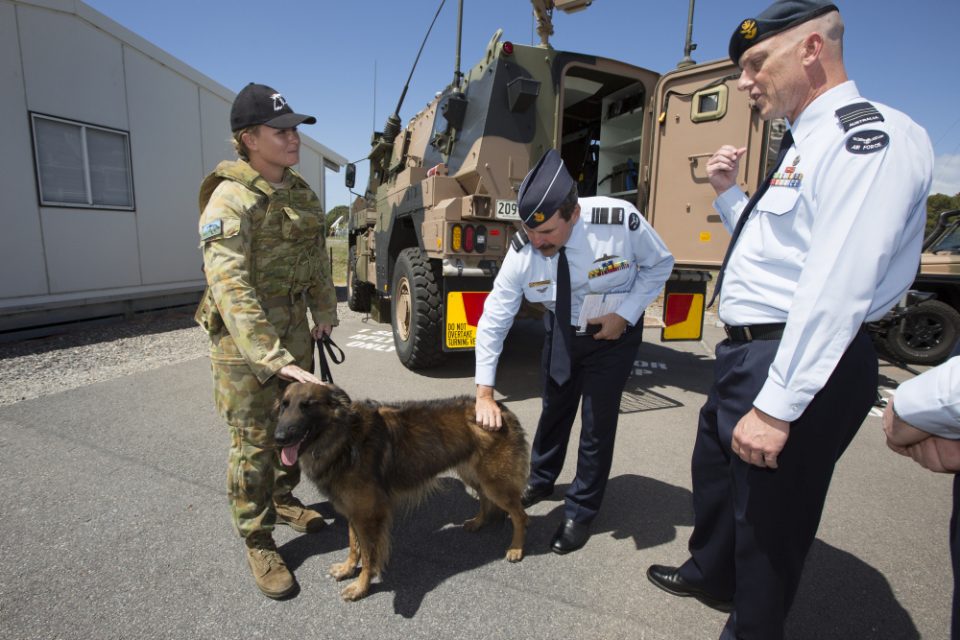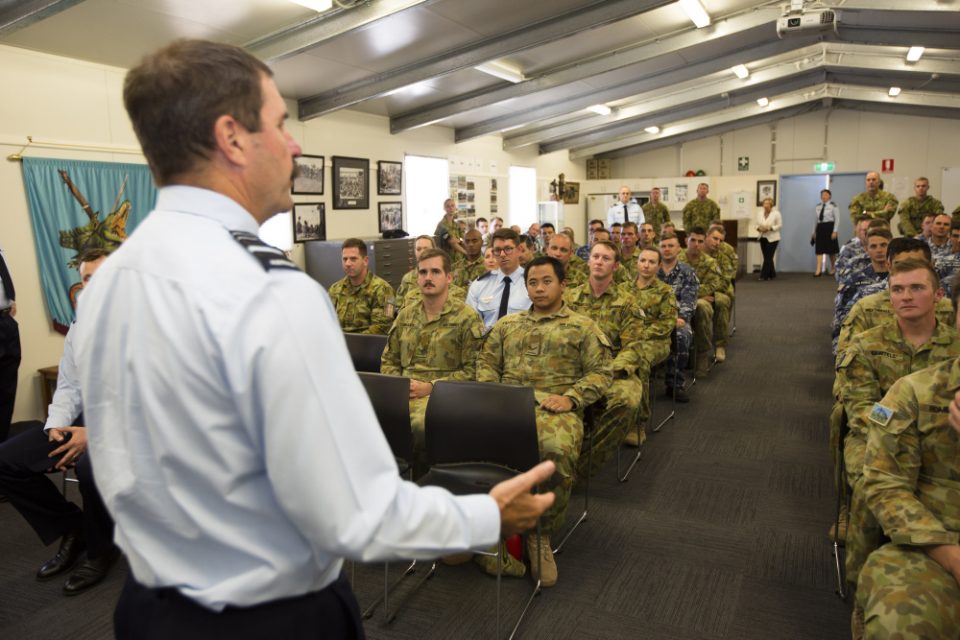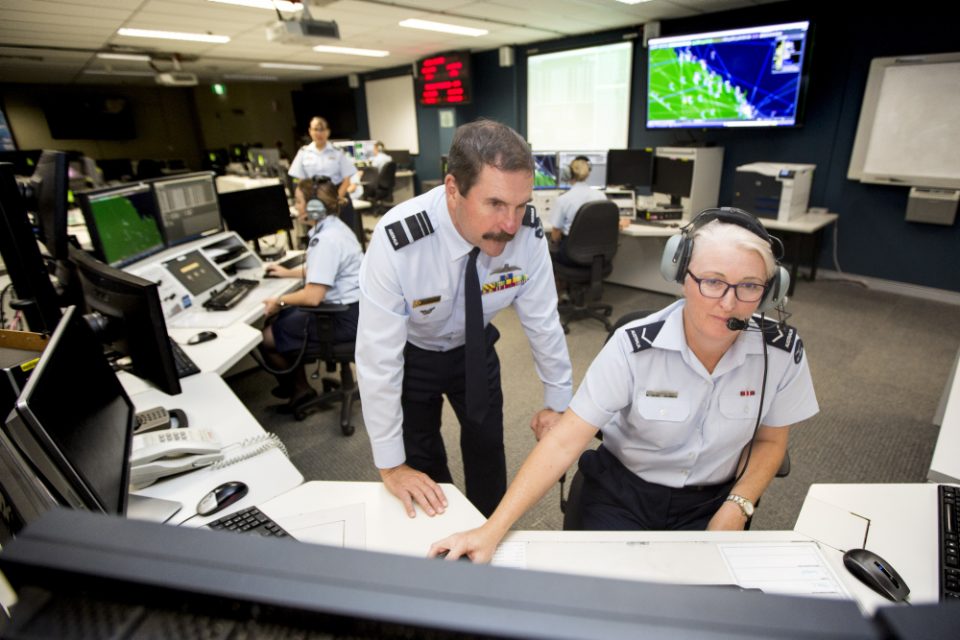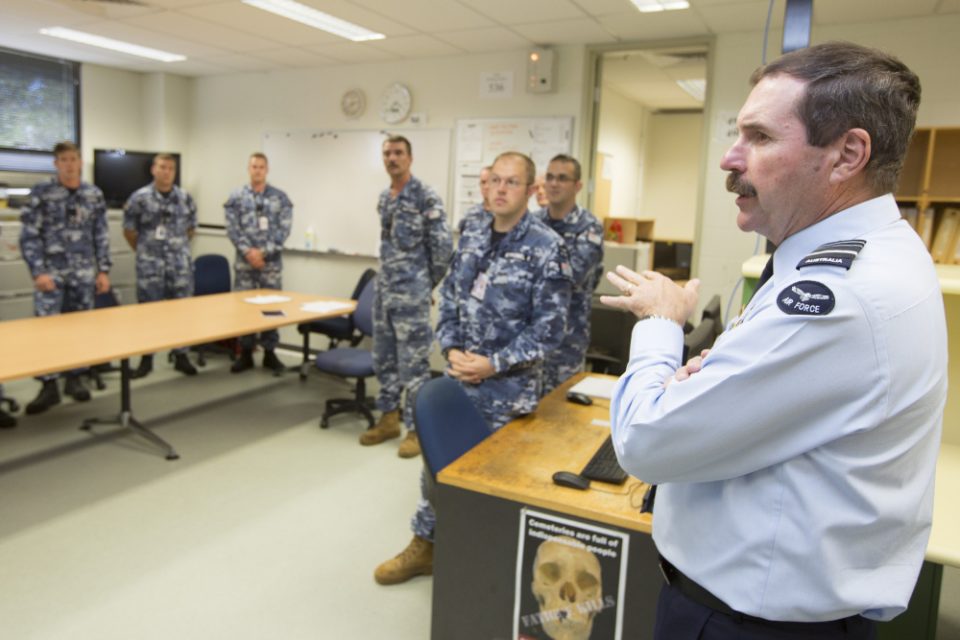Chief of Air Force, Air Marshal Leo Davies, AO, CSC, accompanied by his wife Rhonda, visited RAAF Base Williamtown on the 7th March 2018.
The visit included elements from Air Combat Group, Surveillance and Response Group, Combat Support Group, Air Warfare Centre as well as infrastructure projects on the base
The base is being significantly upgraded as it transitions from Hornet to F-35 operations and continued modernization of Wedgetail and other SRG assets.
The Second Line of Defense team visited Williamtown shortly thereafter on March 13 and 14 and met with CDR ACG AIRCRE Michael Kitcher and AIRCDRE Craig Heap, the SRG Commander.
We will be publishing interviews with both shortly.
Photos credited to Australian Department of Defence, March 7, 2018
Air Marshal Davies recently hosted the RAAF Airpower Conference 2018 which provided a good look at the perceived dynamics of change in the broader global environment and within the ongoing technological revolution reshaping the demand side of both the use and development of modern airpower and the ADF more generally.
In his opening remarks, he highlighted the growth in the breadth and depth of the challenges facing airpower as well as the growth in demands to operate in the gray zone.
Among the key dynamics he highlighted were the following: the dispersal of global influence and the diversity of power centers; the shift in the center of global power from the North Atlantic to the Indo-Pacific region, the elevated strategic impact of China and North Korea; the shifts in US national strategy from focusing primarily on counter-terrorism to great power challenges.
These dynamics were leading to the need to invest in higher end military capabilities and to seek innovative solutions to ensure that the liberal democracies had credible deterrent capabilities.
He underscored the core significance for the RAAF of evolving the skill sets to deal with these challenges which he characterized as shaping skill sets which could move beyond a narrow definition of mission performance to deal with the distributed battlespace and its more strategic demand set
He concluded with the following:
The disruptive world is presenting new challenges to the role of airpower in supporting national security objectives.
I don’t know what the next conflict will be, but I do know:
Many of the tools of trade are now more freely available to potential adversaries than ever before;
In future conflicts we can expect bases and support infrastructures, including civilian infrastructure, to be targeted through the use of physical and non-physical effects;
These are no longer sanctuaries immune from attack;
Emerging technologies will revolutionise the application of air power but also give rise to new challenges.
Success in the future battlespace requires the coordination of joint effects across all domains – a system of systems.
Airpower must be comprehensively integrated across the joint force to contribute meaningfully to the future fight.
These obstacles and challenges are real, but so are the visions and the ideas we will bring to meet them.
I have confidence in our Airmen to deliver on our vision.
I am reminded of the words of Henry Parkes, our father of federation, as he looked to the challenges at the creation of our nation, ‘In one hand I have a dream, in the other I have an obstacle. Tell me, which one grabs your attention?’
My proposition is that we ‘grab’ both, and collectively chart a new path for airpower in this disruptive world.


